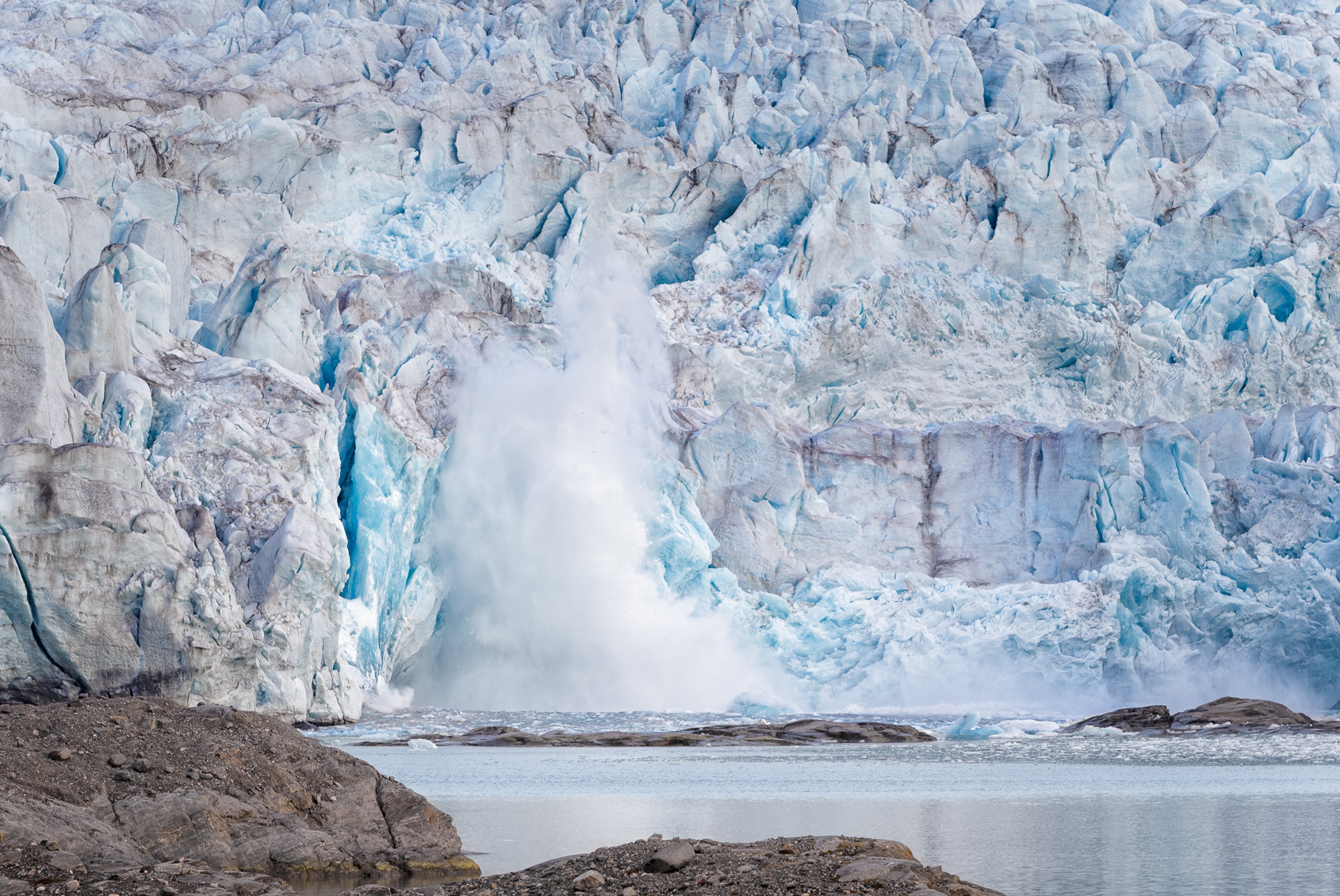The glacier ‘Calving’ means when the ice breaks off a glacier. As you can see in the photograph, the breakaway ice drops into the ocean. That calving of the glacier generates a robust and loud sound, which is like the thunder sound. Undoubtedly the water splashes high from the impact into the water.
Also, the bigger the ice piece which breaks off, the bigger the wave/tsunami will follow. In the foreground of the photograph are large boulders reaching out of the water. The jagged edges, crevices, and unique shapes create much texture to the composition.
Glacier calving happens due to a rift that opens at the edge of a glacier. Undoubtedly, wind, water erosion, melting ice, and other things cause a glacier to become volatile. These massive ice losses are increasing due to glacier acceleration and retreat, mainly in response to increased heat flux from the oceans. The calving rates often change annually, with calving slowing or shutting down entirely over the winter.
Interestingly, the famous Greenland ice sheet flows slowly into the ocean through a series of glaciers. One of the most famous of these is the Jakobshavn Isbrae. It is the world’s fastest flowing glacier, which we think was calving the iceberg that sunk the Titanic.
Please enjoy more of our other landscape photographs for more icebergs, and sunsets. Expect the unexpected, also Polar bears stand in front of glaciers. Our nature photographs are for sale of photo licenses and photographic prints.
This photograph is available to be purchased as a print. We offer our prints as unmounted fine art prints and framed prints that are ready-to-hang on your wall out of the box. Another option is that it can be licensed for personal or commercial use. Just click the add_shopping_cart icon left-hand side above the photo to select your choice.
For more information about the various types of prints we offer to purchase, please visit our Purchasing a print FAQ page.
Our Photo Licensing FAQ page explains the license types and helps you to choose the right license for your needs.
Before making a purchase, please read our Terms & Conditions page.

Clare –
Wow!! What an impressive and powerful moment you’ve perfectly captured!!
Anette Mossbacher –
If a photo would play also sound, you would hear a loud sound like thunder. Of course, also the splashing of the water. Thank you, Clare.